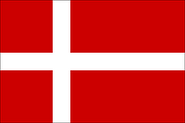Anyway... back to Budapest. The city can be traced back roughly 1,000 years when Magyars settled in the area. Buda and Pest were originally two different cities, which were unified in 1873. Budapest has seen a lot of trouble in its days, from a Mongol invasion in 1241, a Turkish invasion in 1541, controlled by the Austrian Empire, being attacked during World War II, as well as several decades of communist rule. Despite enforcement of Nazi policies by the Arrow Cross during World War II, Budapest has the highest per capita number of Jewish residents of any major European city. It is also believed to be the "gayest" city in Europe, although I'm not sure how one would measure that.
 There are a number of districts and attractions in Budapest that are worth noting. One of the obvious ones on the Buda side is Castle Hill, an area that contains Buda Castle complete with labyrinth, the Hungarian National Gallery, National Széchényi Library, Matthias Church, the Holy Trinity Column, and the Fisherman's Bastion among other things.
There are a number of districts and attractions in Budapest that are worth noting. One of the obvious ones on the Buda side is Castle Hill, an area that contains Buda Castle complete with labyrinth, the Hungarian National Gallery, National Széchényi Library, Matthias Church, the Holy Trinity Column, and the Fisherman's Bastion among other things.To the south of Castle Hill are Gellért Hill and area called the Tabán. In the former is one of Budapest's famous thermal baths, the aptly named Gellért Baths. The hill itself is said to be one of the best views in Budapest, looking over Castle Hill and the Danube, and is also home to the Citadella, a castle that now also doubles as a restaurant, hostel, and disco. Gellért Hill is also home to a number of famous caves and statues, mostly prominently the Szabadság-sabor or Liberty Statue.
The part of Buda right north of Castle Hill is called Víziváros which is home to Millennium Park, the Lukács Baths, and the Tomb of Gül Baba among other things. Further north is Óbuda or 'Old Buda.' Here lies the Aquincum museum among the ruins of the ancient Roman settlement, along with a variety of other reconstructed Roman buildings and a smattering of museums. Other areas around here are the Buda Hills and Margaret Island, which actually lies on the Danube between the Buda and Pest.
Alright this post appears to be going on and on so I will cut it off at the Buda side of Budapest. Plus I think it may break the spell checker. I may add some more stuff here later as I peruse my Budapest book and the Internet.
Sziasztok!

No comments:
Post a Comment